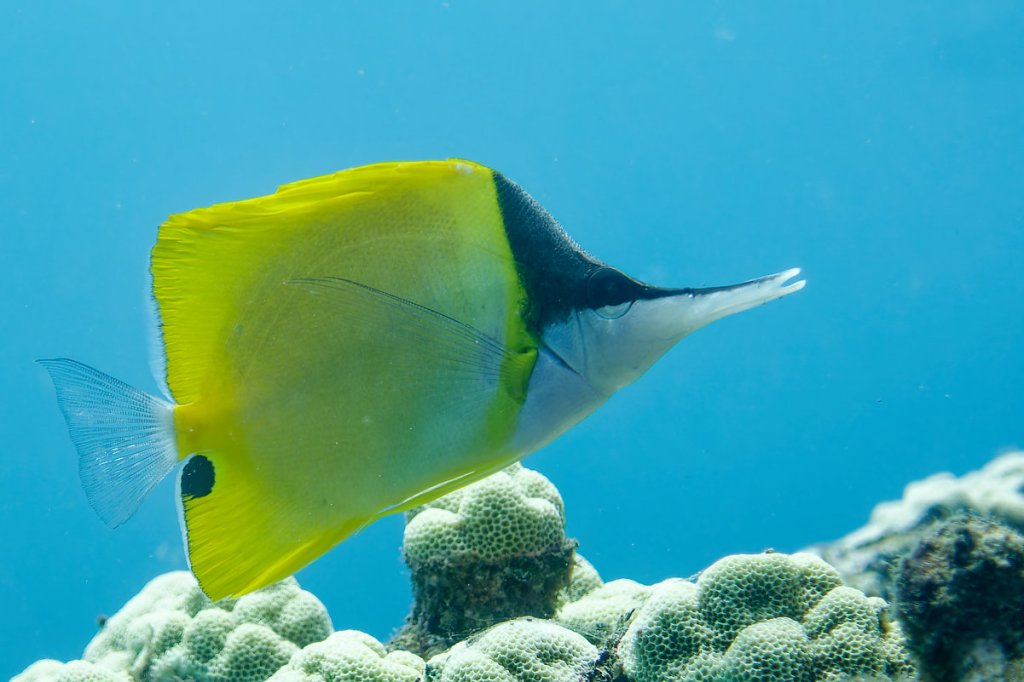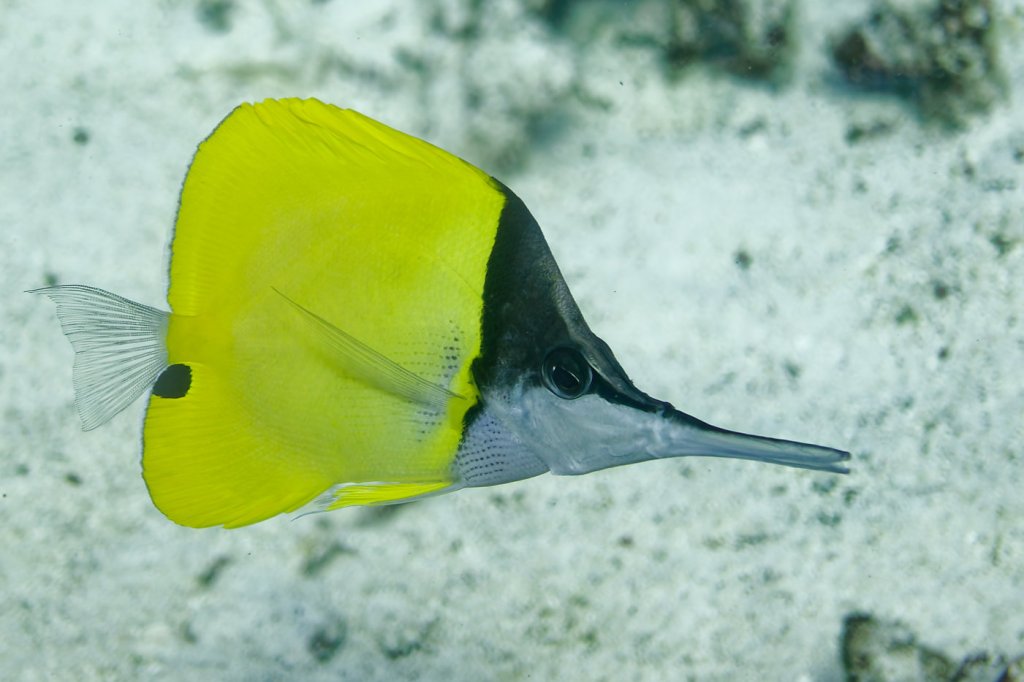Stumbled across some leftover photos from our July Hawaii trip:
They’re beautiful, weird, and ubiquitous on tropical Pacific reefs. We see Longnose Butterflyfish wandering nonchalantly over the reefs on pretty much every one of our snorkel and dive outings. There are two species that go by the name Longnose Butterfly: the common Forcipiger flavissimus and the somewhat uncommon F. longirostris. John Hoover (hawaiisfishes.com) calls flavissimus Common Longnose Butterflyfish and refers to longirostris as Big Longnose Butterflyfish. Other authorities, such as Keoki Stender (marinelifephotography.com), refer to the respective species as Forcepsfish and Longnose Butterflyfish. Flavissimus is also sometimes called Yellow Longnose Butterflyfish and longirostris is sometimes called Big Forcepsfish. Confusing to you? Me too. Do you care? Well, I do.
Besides being inconsistently named, the two species can be difficult to tell apart. Longirostris tends to be a bit bigger, with a longer snout, but there’s some overlap in size. Two features are generally used to distinguish the species in the field. The first is coloration: I usually look for tiny black dots on the fish’s chest—longirostris has them, flavissimus doesn’t. Trouble is, you have to be close and have good eyesight (and a non-fogged mask) to see this. The second is mouth shape: Flavissimus is supposed to have a deeper oral cleft than longirostris, but I can’t tell the difference, at least not on a living, moving fish. Photos make it a little easier. Like these:


These two very similar species share the same habitat throughout much of the Indopacific, but they don’t directly compete. Flavissimus is a dietary generalist, eating all sorts of small invertebrates, and, rather oddly, often plucking off the tube feet of echinoderms such as urchins and sea stars. (The echinoderms have plenty of feet to spare, but it still sounds painful.) Longirostris on the other hand specializes in picking tiny shrimp from deep inside coral heads.
Anyway, there’s your fish minutiae for the day.

Man, how did you find this out?
The late, very much missed Jack Randall cut a bunch of them open and examined their gut content to figure out their diets.